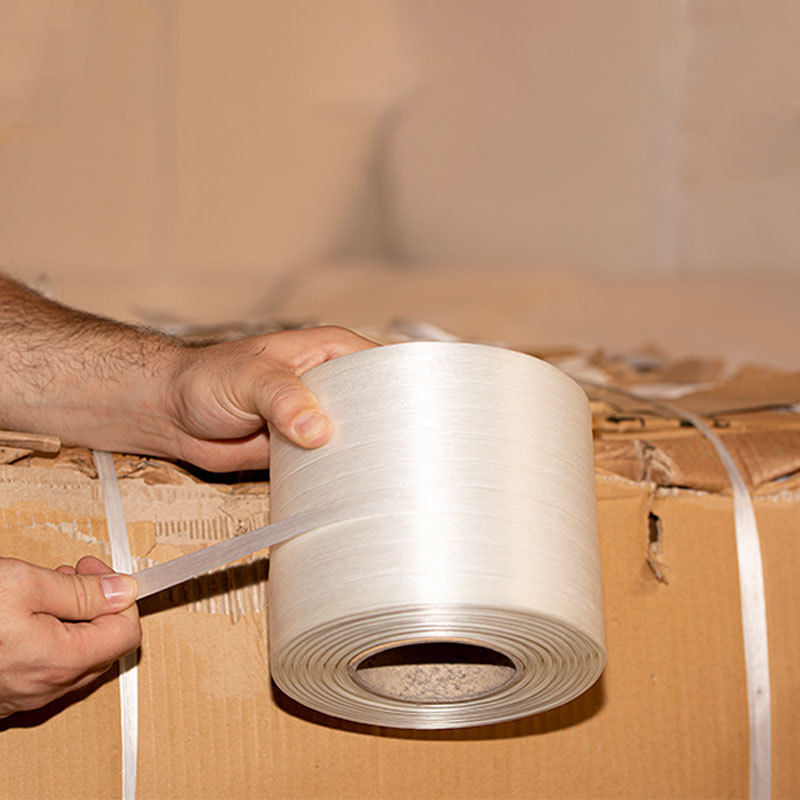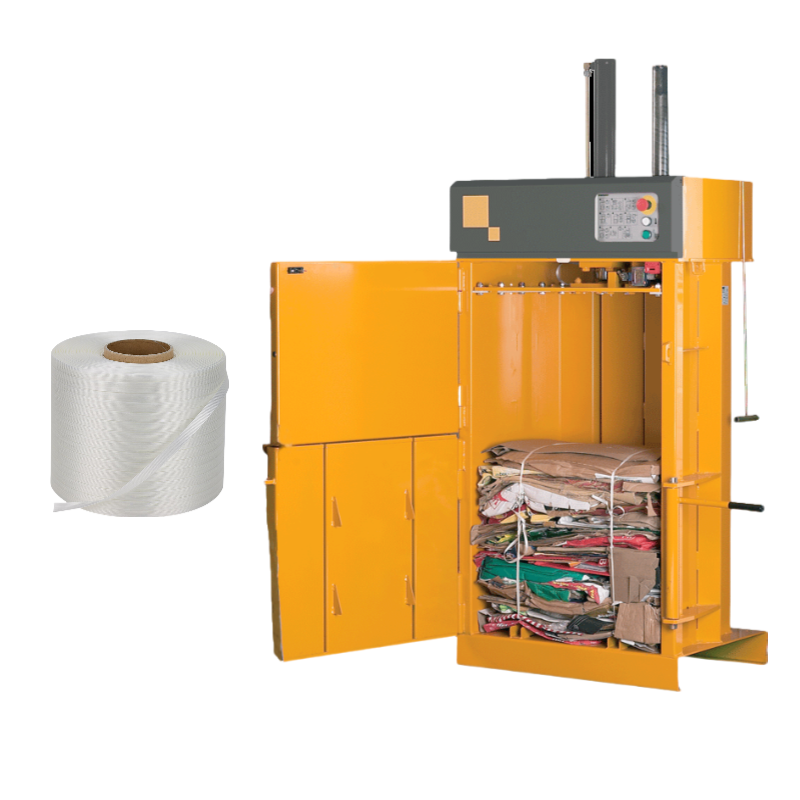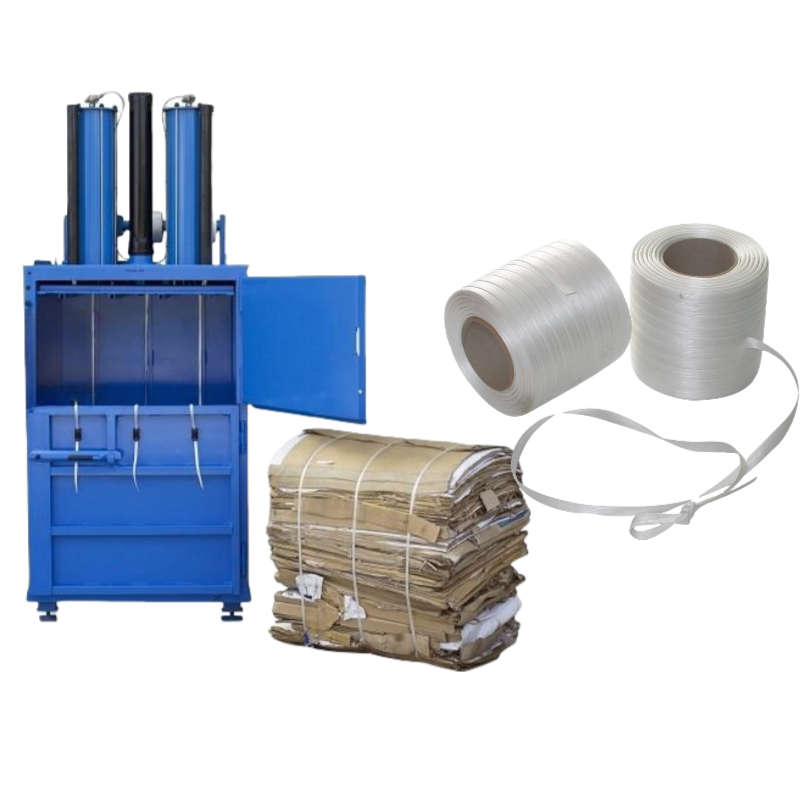As global industries shift toward sustainability, recycling has become an essential part of waste management and resource conservation. In the recycling industry, materials such as paper, plastic, metal, and textiles are compressed into compact bales to facilitate transportation and storage. Securing these compressed materials requires reliable and high-strength strapping solutions. One of the most effective options is hot melt strapping, which offers durability, flexibility, and cost efficiency. This article explores the critical role of hot melt straps in recycling operations, their advantages, and how they contribute to a more efficient and environmentally friendly waste management process.
Understanding Hot Melt Straps
Hot melt straps are made from high-quality polyester fibers bonded together using a heat-sealing process. This method enhances the strap’s tensile strength, making it a preferred choice for securing heavy loads. Unlike traditional plastic strapping, hot melt straps offer greater flexibility and shock absorption, which are crucial when handling compressed materials in recycling operations.
Key features of hot melt straps include:
- High tensile strength to withstand the pressure of compressed materials.
- Shock resistance to prevent breakage during handling and transport.
- Lightweight and easy handling compared to metal strapping.
- Corrosion and weather resistance, making them suitable for various environments.
- Cost-effective and environmentally friendly, as they are often made from recyclable materials.


The Role of Hot Melt Straps in Recycling
Recycling facilities process large volumes of waste daily, compressing materials into dense bales to maximize storage space and reduce transportation costs. Proper strapping is essential to ensure that these bales remain intact throughout the supply chain. Hot melt straps are widely used in recycling for the following reasons:
1. Enhancing Load Stability
When materials are compressed into bales using a baling machine, they exert significant pressure outward. Hot melt straps provide strong tension retention, preventing bales from expanding or loosening. This ensures that compressed materials remain compact, reducing the risk of load shifting during handling and transport.
2. Improving Safety in Recycling Operations
Improperly secured bales can pose serious safety hazards. If a strap breaks or fails, compressed materials can fall apart, leading to injuries or damage to equipment. Hot melt straps offer high break strength and reliable holding power, minimizing the risk of accidents in recycling plants and warehouses.
3. Versatility Across Different Recycling Materials
Hot melt straps are suitable for securing various types of recyclable materials, including:
- Paper and cardboard – Prevents expansion and maintains bale integrity.
- Plastic waste – Keeps compressed bottles and containers compact for efficient transport.
- Metal scraps – Offers strong tension resistance for heavy and dense materials.
- Textile waste – Ensures that compressed fabric bales remain tightly bound.
The adaptability of hot melt straps makes them an ideal choice for multiple recycling applications.
4. Cost-Effective and Efficient Packaging Solution
Compared to steel strapping, hot melt straps are more affordable and easier to handle. Their lightweight nature reduces labor costs and speeds up the strapping process. Additionally, they do not require specialized tools such as metal crimping devices, making them a more efficient and user-friendly solution for recycling facilities.
5. Eco-Friendly Alternative
As sustainability becomes a priority, many recycling plants seek environmentally friendly strapping solutions. Hot melt straps are often made from recyclable polyester, reducing waste and promoting a circular economy. Additionally, their non-metallic composition eliminates the risk of rust and contamination, making them a cleaner and safer option for securing recyclables.


Choosing the Right Hot Melt Straps for Recycling
Selecting the right hot melt strap depends on factors such as bale weight, material type, and transportation conditions. Here are some key considerations:
- Strap Width and Thickness – Heavier bales require wider and thicker straps for added strength.
- Breaking Strength – Choose straps with sufficient tensile strength to handle high-pressure compression.
- Weather and UV Resistance – If bales are stored outdoors, opt for UV-resistant hot melt straps to prevent degradation.
- Compatibility with Strapping Tools – Ensure the strap works with tensioners and buckles used in your facility.
Conclusion
Hot melt straps play a vital role in the recycling industry by providing secure, durable, and cost-effective solutions for binding compressed materials. Their high tensile strength, flexibility, and eco-friendly properties make them an ideal choice for securing bales of paper, plastic, metal, and textiles. As recycling facilities continue to expand, investing in high-quality hot melt strapping will help improve operational efficiency, enhance safety, and contribute to sustainable waste management.
By choosing hot melt straps, recycling businesses can ensure stronger, safer, and more efficient packaging solutions, ultimately supporting a greener and more sustainable future.